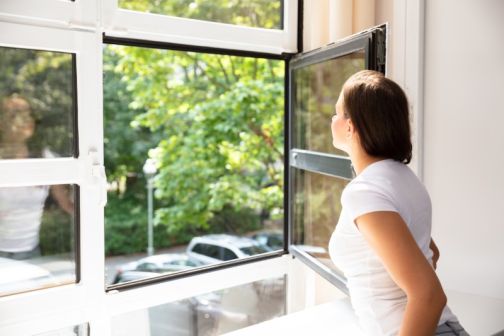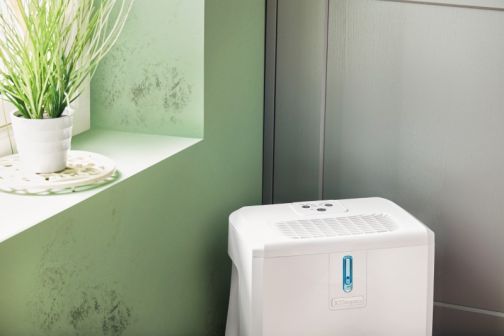How to Improve Indoor Air Quality at Home

The figures reveal that 75% of reporting zones have levels of air pollution that are above legal levels. With this focus on air pollution in our towns and cities, it’s also worth taking some time to think about the air quality in your own home, and how you can improve it. As winter approaches we’re likely to spend more time indoors, so why not read on to find out how you can help yourself and your family breathe easier in the colder months.
What causes indoor air pollution?
To quote the British Lung Foundation, ‘Indoor air pollution is dust, dirt or gases in the air inside a building such as your home or workplace that harms us if we breathe it in.’
The most common types of air pollution are microscopic particles of dust and dirt in the air, or gases, particularly carbon monoxide, nitrogen oxides and sulphur dioxide. There can be many cause of indoor air pollution, but common ones include:
- The way you heat your home
- Your method of cooking
- Poor ventilation
- Damp and moisture build up
- Chemicals in some cleaning products
- Some building materials
- Regular use of candles and incense
Health issues
Whilst children and those with lung conditions are particularly vulnerable, everyone can be affected by poor indoor air quality. As we move into the colder months many of us will be spending more time indoors, which means we may have more contact with the things that can affect the air you breathe, such as mould or some chemicals in cleaning products.

Practical tips for the home
There are many things you can do right away to help improve the air quality at home:
- Open your windows – Ensuring your home has a fresh airflow can do a lot to improve the air quality, and is particularly helpful when cleaning or decorating.
- Use your cooker hood and extractor fan – Cooking and washing are both activities that generate moisture in the air, but cooker hoods and extractor fans draw the moisture away and flush it outside.
- Use candles and oil burners in moderation – Sometimes lighting a scented candle or oil burner can be just the thing to help you wind down after a long day, but be moderate in using them and ensure that you ventilate the spaces the following day to help circulate the air.
- Keep on cleaning – An obvious one we know, but regular dusting and vacuuming is an important part of keeping the air clear in your home. Bash cushions and shake rugs outdoors to clear them of dust and remove it from your home, and moving furniture to vacuum any dust beneath regularly is also important.
- Watch for damp and mould – Build up of moisture in the home can sometimes result in mould, which in turn can have a negative impact on the air quality in your home. It’s important to combat mould in the home as soon as you find it, and for more tips on how you can read our recent blog: Top tips for mould and damp prevention.
Tools to manage indoor air quality

As well as the simple steps above, you might wish to consider investing in an air treatment product, such as an air purifier or dehumidifier.
A dehumidifier can help you control the humidity of your home and can be particularly useful if your property typically suffers from condensation. Dehumidifiers, such as the Dimplex EverDri 14L, work by extracting moisture from the air, lowering the humidity of the environment and as an added bonus can decrease the time it takes damp clothes to dry. This can be useful in the colder, wetter months, when drying your laundry outdoors is not always possible.
An air purifier helps to trap dust and other particles before they can settle, meaning your air is cleaner and you have less to clean. The Dimplex 3 stage air purifier combines a carbon and HEPA filter and Viro3 to tackle odours, dust mites, mould spores and more, and is an ideal size to fit unobtrusively into any room. Using an air purifier on a regular basis can help keep the air in your room fresh and clear whilst you work or even sleep.
Invest for winter and stay clear all year round
The tips and products we’ve shared in this blog can help you keep the air quality in your home nice and fresh throughout the winter, but are just as valid during the warmer months. Taking a few steps each week can ensure that you are breathing fresh and clear air indoors, whatever the time of year.








